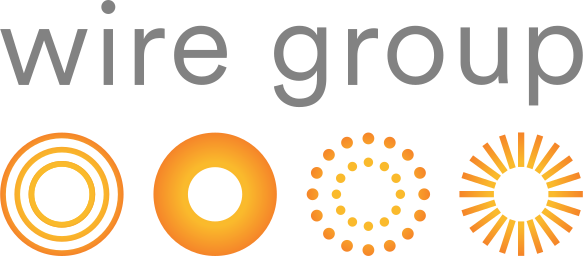When starting in the Impact investing or Private Equity world, did you ever wonder where the “commonly accepted” fund terms come from? Why are almost all funds 10 years + 1+ 1? Why is the management fee 2%, with a carried interest of 20% over a hurdle of 8%? And how can we apply this model, fully relying on financial incentives, to make impact investments? In this blog I share some of the insights -and hopeful examples- that we gained at Wire Group, based on our experience in impact investing in the last decade.
Rewarding sailers & whalers
The traditional fund terms seem to be set in stone and are only questioned when they are deviated from. Yet when scrutinized, they seem more random than rational: Why should the hurdle be 8% irrespective of the interest environment or cost of funding? Why is Carried Interest only linked to financial outcomes and why is it set at 20%, and not 15%, or 25%? The latter number apparently[1] comes from the 16th century when captains roaming the global oceans would take a 20 % share of the profit from the “carried goods” to pay for the transport and compensate them for the -significant- risk of sailing over oceans (think pirates, storms, diseases). The same concept was used in the risky and uncertain business of whaling[2] in the 19th century, where the crew would receive a share of the profits in case they landed a whale. Clearly, PE managers felt they faced similar risks when justifying earning 20% of the upside when they land a unicorn.
Enter the impact investor
Interestingly, when impact investors entered the picture in the early 2000’s they generally embraced the traditional PE/VC model. Not necessarily because they believed it to be perfect for an impact fund, but because raising money for impact is difficult enough without having to explain changes made to the status quo of fund terms.
The PE fund model does have some strong characteristics which are useful for impact investors: it enables the manager to have an influence on the management of the portfolio companies, it allows for the alignment of interest and enables fund managers to attract capital from investors, who know this model. At the same time, the traditional model is fully focused on maximizing financial outcomes in the -relatively- short term.
At Wire Group, we strive towards a Conscious Economy, which is an economy in which terms are fair and represent an exchange of real value. We know our current economic thinking has brought us to a world of planetary disbalance, and what got us here won’t get us there. When moving towards a Conscious Economy, the answer of “that is how we have always done things” or “this is market practice” is not good enough. In such an economy we challenge ourselves to think about the fairness, reasonability and proportionality of arrangements.
Rethinking the model
Fortunately, we are now seeing several impact fund managers that are adjusting the model to align better with the goals of the funds they manage. By sharing these we hope to inspire others and also to connect to more investors that are innovating in this space. Below are some of the hopeful examples of innovations to the fund model which we are seeing in the market:
Impact-Linked Carried Interest A very logical first tweak is to adjust the success fee of impact funds to account for their dual target of creating Impact and Financial return. According to Bluemark’s 2022 “Making the Mark” report[3], a mere 7% of Bluemark’s verified investors have impact-linked carried interest. A draft report by research collective ImpactLinked.co[4] concludes that almost all funds implementing impact-linked carried interest have done so in the last two years, indicating a strong recent increase, though these take many different shapes and forms. Fortunately, more-and-more investors – including the European Investment Fund, one of Europe’s largest – are requiring this from their fund managers. Interesting examples in our network include Blume Equity (tying 30% of their carried to impact), Rubio Impact Ventures (100%), the Drawdown Fund (50%), Ananda Ventures – who were the first in Europe to do so – (100%), and Wire Group’s own two Fund of Funds (50% and 100% respectively).
The same concept of incentive alignment can be applied at the level of the individuals active at a fund manager. An example being Leapfrog Investments (an emerging markets impact fund) which ties the remuneration of its employees to the extent to which they reach their impact KPIs. This concept is more widespread amongst impact funds, with Bluemark reporting 31% of investors linking their staff compensation to impact performance.
Embedding Impact Besides aligning the financial incentives, several funds are seeking other ways to safeguard the impact of the portfolio companies. A powerful example is Cross Border Ventures (a Canadian investor into healthcare for women and children) which uses Impact Pledges to align the management and other shareholders on the targeted impact KPIs and invests part of the exit proceeds in aligned charities in case the impact is not reached. An alternative method applied by Rubio Impact Ventures (one of the original European impact venture investors) consist of engraining the impact mandate of the company into the statutes of the company, which require the fund’s (and often the founder’s) approval to be amended. The fund also has an external Impact Advisory board which needs to agree on the impact KPIs that are agreed with the companies and which form the basis for the determination of the impact-linked carry. Another great example of this is Planet A Ventures, which has a science team that performs -and publishes- Life Cycle Assessments for each of their investments. At Wire Group we embed impact by calculating the Impact Multiple of Money, which is a measure we report on alongside our financial reporting as part of our Multi Value Report. Furthermore, any carried interest that is not attributable to Wire Group -due to not reaching the impact targets- flows to a charity, to ensure that there is always impact being created.
Caring Capital Especially in Venture Capital, the outcomes can be rather binary, leaving those founders who fail (which is approximately 75%[5]) empty-handed. This is one of the reasons Masawa Ventures (a European venture investor into mental wellbeing) is redesigning the model into what they call “Nurture Capital”. Besides offering exit support to those founders, the fund shares the carried interest amongst all founders, providing some kind of safety net and aligning the portfolio to work towards joint success. Furthermore, recognizing the importance of founder’s mental health, the fund provides for mental health support for its founders. Similarly, Ananda Ventures (a German-based impact venture fund) works with its founder through its founder mental health initiative, offering leadership coaching, HR assessments and resilience training,
Term While there are benefits to the 10 year term of most PE/VC funds, such timelines do not work for all industries and phases of investment. Some investors (e.g. Climate Fund Managers, Just Climate) therefore have longer fund lives. A different approach is chosen by our fellow Utrecht-based fund manager Aquaspark (investing in global sustainable aquaculture). They chose to create an evergreen vehicle so that they can build long-term relationships and create an ecosystem of companies in the sustainable aquaculture sector.
Support for portfolio companies Another innovation which may not be invented by the impact investors but is an adaption of traditional PE’s “value creation” strategy is support for portfolio companies. A great example of this is Leapfrog Investments (an Emerging Markets fund manager investing in financial inclusions and health). This fund manager has created a concept called Leapfrog Labs, which is a service that provides technical assistance to the companies it invests in. As such, it can finance impactful interventions which may not be commercially investable.
Blended finance A concept that is unique to impact funds is blended finance. With a blended finance structure, there are providers of donor/catalytic capital (e.g. NGOs or Government institutions) that help to improve the risk-reward structure of a fund. The reason these financiers provide this capital is to entice “commercial” investors to invest into regions or sectors that they may otherwise shy away from. The catalytic capital can take the form[6] of a first loss tranche or guarantee, which decreases the downside risk for the senior investors. It may also include a capped/limited upside for the catalytic capital, which means that the senior investor get a larger portion of the profits. There are many variations to the structure, but all are targeted at improving the risk-reward structure to catalyze funding into the region/sector. Some interesting examples of this concept can be found in Cross Border Ventures (catalyzing for investment into health solutions for women and children), Eversource’s Green Growth Equity Fund (catalyzing for the Indian energy/resource transition), Climate Fund Manager (catalyzing for emerging markets), and the Global Fund for Coral Reef (catalyzing for investments that positively affect the oceans).
Rethinking the shareholder model all-together Of course, the above innovations are variations of the conventional shareholder model in order to align them with an impact focus. There are parties out there that are rethinking the shareholder model completely and investing though different structures. One of the most experienced and best-known examples is the Purpose Foundation in Germany, which invests in stewards-owned companies through its Purpose Evergreen Capital and Purpose Ventures funds. These are evergreen funds that provide growth capital to companies without requiring a sale/exit, by using products such as revenue-sharing loans or mezzanine capital. A lesser-known example of this is our own Wire Group, which converted to a “purpose-led” or “steward owned” cooperative earlier this year and now has its purpose anchored in the structure.`
Conclusion
At Wire Group we are constantly seeking innovations that may contribute to a more Conscious Economy. In our most recent fund, the Wire Thrive Fund, we have included innovations such as our “conscious contract” (short, understandable contract based on trust), 100% impact linked carried interest, and a Purpose and Investment Council. Recently, we are encouraged by an increasing number of fund managers that dare to challenge the status quo and adjust the standard model to better fit the purpose of these funds. Our work with these funds helps us to constantly learn from them and implement the best practices in our own offerings. Jointly, we can move the industry towards a better “market practice”.
Ronald Janse, Chief Conscious Capital Wire Group
[1] See Wikipedia here or Medium article here
[2] See Harvard Business Review article here
[3] See Bluemark report here
[4] See ImpactLinked.co website here
[5] See Harvard Business School here
[6] See for example: here




